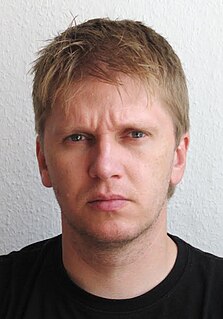 W
WArahmaiani is an Indonesian artist born in Bandung and based in Yogyakarta, Central Java, Indonesia. Arahmaiani is considered by many to be one of the most respected and iconic contemporary artists, specifically in pioneering performance art in Southeast Asia. Arahmaiani frequently uses art as a means of critical commentary on social, religion, gender and cultural issues.
 W
WPaulo Henrique is a Portuguese choreographer and multimedia performance artist. As a choreographer, he has created a number of performance and installation works, integrating different media such as video, sound, text, voice, and plastic arts. Since 2009 Paulo Henrique is based in Paris, France.
 W
WEmily Jacir is a Palestinian artist and filmmaker.
 W
WKimsooja is a South Korean, multi-disciplinary conceptual artist based in New York, Paris, and Seoul. Her practice combines performance, film, photo, and site-specific installation using textile, light, and sound. Kimsooja's work investigates questions concerning the conditions of humanity, while engaging issues of aesthetics, culture, politics, and the environment. Her principle of ‘non-doing’ and ‘non-making,’ which follows a conceptual and structural investigation of performance through modes of mobility and immobility, inverts the notion of the artist as the predominant actor.
 W
WJorge de León is a Guatemalan performance artist who specializes in body art and art object. He was born in Guatemala City, and forms part of the post-war generation of artists that includes Regina José Galindo and Anibal López. His work is extremely influenced by his past as a gang-banger. Before he became an artist Jorge was in and out of jail twelve times, and now looked to art as a means of confronting the gang violence rampant in Guatemala. His work is extremely political and seeks to question the dynamics of power in one of the countries in Latin America that has been more affected by extreme inequality, violence, and political corruption.
 W
WAto Malinda, also known as Alex Mawimbi is a multidisciplinary performance artist.
 W
WSandra Monterroso is a Guatemalan visual artist and designer. Art historian Virginia Pérez-Ratton writes about Monterroso's beginnings as a performance artist in Guatemala during 1999 and 2000. Alongside her were other Guatemalan female performers like Regina José Galindo, Maria Adela Díaz, and Jessica Lagunas. Recently Monterroso's work focuses not only in performance art, she works with different media as videoart, installations and mix media. Her work is related to power structures, gender issues and decolonial thinking. Her work is included in the Artist Pension Trust.
 W
WRoman Ondak is a Slovak conceptual artist.
 W
WNelbia Romero Cabrera was a Uruguayan visual artist. She began her career in drawing and engraving and later incorporated other artistic languages, such as photography, installation, and performance. Her work was marked by themes of politics and protest. She was an active participant in the Montevideo Engraving Club. She received a Guggenheim Fellowship in 1994 and was granted the Figari Award in 2006 for her artistic career.
 W
WLaolu (Olaolu) Senbanjo, also known as "Laolu NYC", is a Nigerian visual artist, musician, singer/songwriter, and former human rights attorney.
 W
WMelati Suryodarmo is an Indonesian durational performance artist. Her physically demanding performances make use of repetitive motions and often last for many hours, sometimes reaching "a level of factual absurdity". Suryodarmo has performed and exhibited throughout Europe and Asia as well as in North America. Born in Surakarta, she attended Padjadjaran University, graduating with a degree in international relations before moving to Germany. She lived there for 20 years, studying performance art at the Braunschweig University of Art with Butoh choreographer Anzu Furukawa and performance artist Marina Abramović.